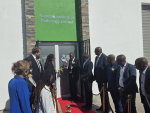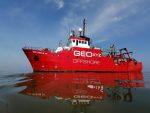Namibia’s offshore deposits could be in the range of hundreds of billions of barrels, Dr. Marcio Mello, President of the Brazil Petroleum Studies, stated during the Namibia International Energy Conference (NIEC). Geological data underscores the potential for over 100 billion barrels of unrisked oil reserves, with hundreds of prospects yet to be drilled.
According to Dr. Mello, Namibia is a unique, supergiant oil play, with opportunities to make billion-barrel finds evident in various basins. “Namibia could be 100 billion barrels [unrisked resources], easily. There are prospects that have not been drilled yet. How about the Walvis and Luderitz basins? The petroleum systems have not been proven yet. We have already mapped [these areas], and the results showed several giant discoveries. Both systems are oil-prone and are in peak to post-peak oil generation in the entire study area,” he stated.
The country has already witnessed nine discoveries in the Orange Basin. Providing estimates, Fernando Sylvester, Independence Consultant, Nautilus Mining and Energy, said, “Galp’s Mopane Well could contain 10 billion barrels; Venus by TotalEnergies could contain between 8-10 billion barrels; and Graff…is easily between 23-23 billion barrels.”
Raydel Toirac Proenza, co-Founder and Geologist, Pioneer Energy, added that “the benefits are unimaginable.”
Onshore, ReconAfrica plans to drill its first exploration well in the Damara fold belt region in Namibia in June 2024. According to Brian Reinsborough, President & CEO at ReconAfrica, “Onshore has the advantages of cost and cycle time. Good rocks plus low cost equals great returns. We feel that we have a great shot at finding oil in the Damara fold belt. We plan to take advantage of existing infrastructure to get an early production system going. If we find oil at scale, we feel that we can bring it online within two-three years at low cost.”
Given this exploration success, Namibia has witnessed a strong slate of M&A activity in recent months, with companies such as Chevron, ExxonMobil, Qatar Energy, and many more farming-into strategic blocks. Shakwa Nyambe, Managing Partner at SNC Incorporated, believes that “Some of the important [M&A] drivers are the resource availability and geology. If the geology is attractive, you will have more M&A. On top of that is the de-risking of that geology. The legal and fiscal regimes are also important as a combination of the resource and legal framework will drive M&A activity – Namibia has that.”
Other drives, according to Stephanie Busch, Senior Associate, ENSAfrica Namibia, “that are considered by companies are the validity of the license – has it followed the administrative approvals to receive rights – as well as relinquishment requirements.”
Nawala Kamati, Partner, Engling Stritter & Partners, highlighted fiscal and legal frameworks in Namibia that promote M&A activity. “Namibia has quite low thresholds for mergers,” she explained.
Given the high costs of 2D and 3D seismic data acquisition, Irvin Titus, Senior Partner at Bowmans Namibia stated that “M&A allow companies to spread risk, [thereby] fast-tracking the initial phases of exploration.”
EPC










